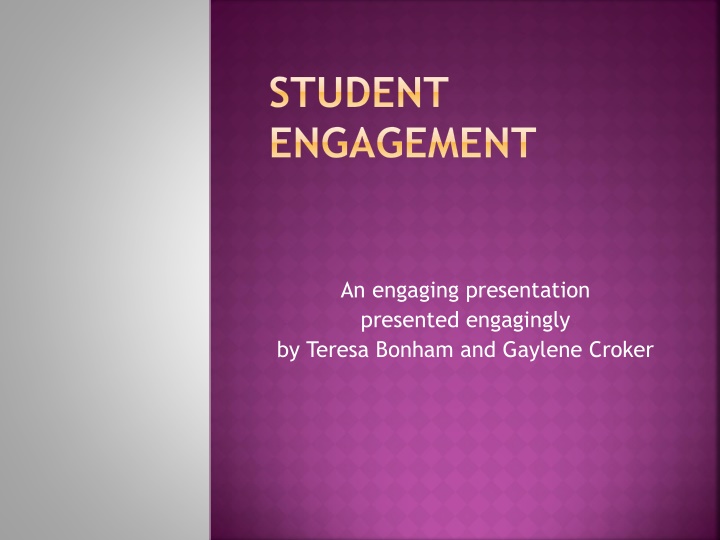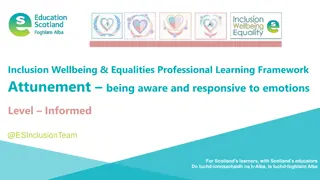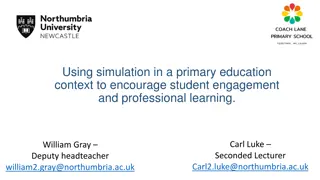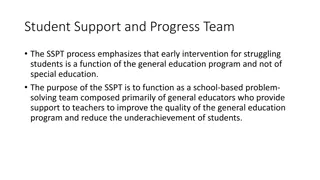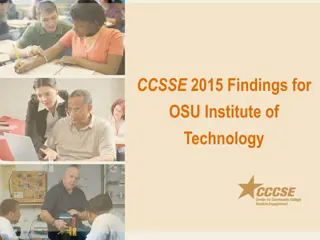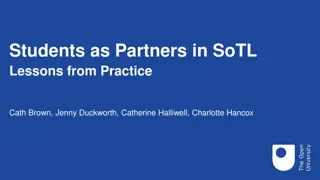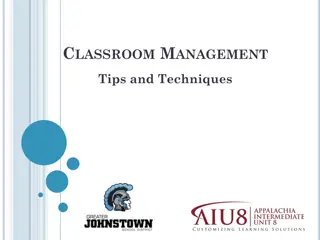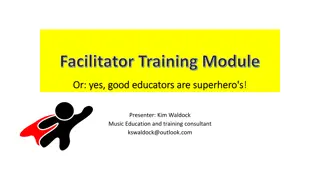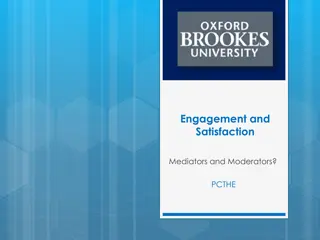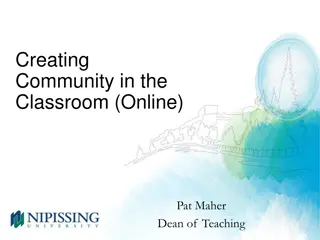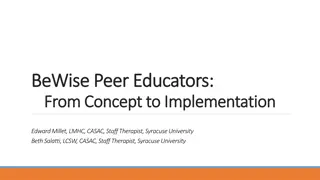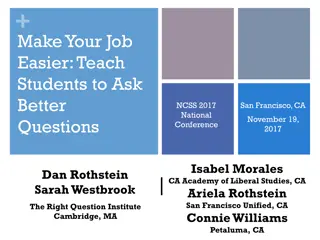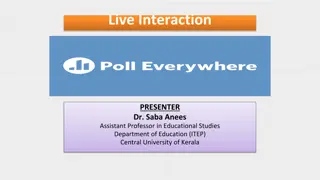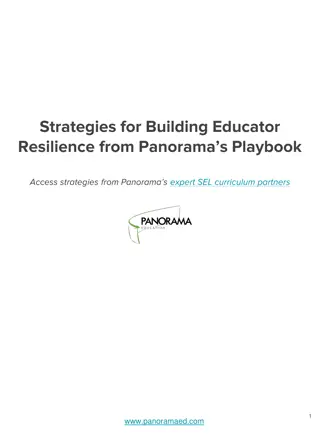Effective Student Engagement Strategies for Educators
Explore the concept of student engagement through engaging presentations, addressing issues faced by educators, and defining active learning methods. Discover how to enhance student interaction and interest in learning, including through games and activities like Dinner Party for critical thinking development. Learn how to shift teaching styles to foster a dynamic learning environment and convert disengaged students into active participants.
Download Presentation

Please find below an Image/Link to download the presentation.
The content on the website is provided AS IS for your information and personal use only. It may not be sold, licensed, or shared on other websites without obtaining consent from the author.If you encounter any issues during the download, it is possible that the publisher has removed the file from their server.
You are allowed to download the files provided on this website for personal or commercial use, subject to the condition that they are used lawfully. All files are the property of their respective owners.
The content on the website is provided AS IS for your information and personal use only. It may not be sold, licensed, or shared on other websites without obtaining consent from the author.
E N D
Presentation Transcript
STUDENT ENGAGEMENT An engaging presentation presented engagingly by Teresa Bonham and Gaylene Croker
STUDENT ENGAGEMENT Teaching and learning share an interesting relationship. Just because there is teaching in a classroom does not mean that there is also learning in that same classroom.
STUDENT ENGAGEMENT ISSUES As current educators, we are dealing with several issues when we look at how to engage our students. First, we are working with students who are used to gathering information at a quicker rate than our lectures; second, we are teaching a diverse group whose academic preparedness is equally diverse.
DEFINING STUDENT ENGAGEMENT Student engagement does not mean entertaining them. To me, student engagement means that students are actively learning. They take an active role in the course material; they want to learn.
ACTIVE LEARNING In active learning, a teacher does not need to radically change, but a teacher may need to shift occasionally from being the sage on the stage to being a guide on the side, or a coach, or a facilitator.
ACTIVE LEARNING: SHARING We both teach English. If we had a nickel for every time students say they hate English, we would no longer need to teach English because we would be stinking rich. We have both had success converting these naysayer students into actively engaged students and a couple of English majors.
LEARNING THROUGH GAMES There are different games to achieve different classroom goals. We will present the following: Dinner Party (critical thinking) Talk Show (critical thinking) Poll (facts and recall & assessment) Team Jeopardy (facts and recall)
DINNER PARTY This activity can be used to help students synthesize information and implement critical thinking in your class. Students are asked to plan a dinner party for six or more guests. They can decide who to invite, but there must be a unifying theme. The students need to be able to identify and explain why they have chosen these guests, what the topics of discussion might be.
TALK SHOW This activity encourages critical thinking skills and can be used for a review of major concepts/characters. Students get into groups and create various questions pertaining to the subject at hand. They pass these on to the next group who answer the questions. One student in each group is assigned a role and comes up to front of class to participate in talk show.
POLL Polling is a way to take the class s pulse while you lecture through asking them specific questions related to your goals.
LOW TECH POLL There are a couple of techniques for low tech poll. One way is to stop your lesson and ask students to give you a signal if they understand or not. I ask for a thumbs up or a thumbs down. Another low tech poll technique is to give students a specific question and give them five to ten minutes to answer the question in writing.
HIGH TECH POLL Just like American Idol, have your students text their response to you, live and use that information to adjust your teaching or incorporate the information into your lecture. Use http://www.polleverywhere.com/ to create free text polling.
PRESENTER TEXT POLLING NOTES Explain what s going on Now I m going to ask for your opinion. We re going to use your phones to do some audience voting just like on American Idol. So please take out your cell phones, but remember to leave them on silent. The way you will be able to participate is by sending a text message. If you don t know how to do that, just ask your kids! Or have your neighbor help you figure it out. Address their concerns This is a just standard rate text message, so it may be free for you, or up to twenty cents on some carriers if you do not have a text messaging plan. The service we are using is serious about privacy. I cannot see your phone numbers, and you ll never receive follow-up text messages outside this presentation. There s only one thing worse than email spam and that s text message spam because you have to pay to receive it! Use a demo or practice poll Set up the Free Text Poll to ask Let s Practice: Text in your first name!
HOW TO VOTE VIA TEXTING 1. Standard texting rates only (worst cast US$0.20) 2. We have no access to your phone number 3. Capitalization doesn t matter, but spaces and spelling do TIPS
QUESTION 1 1. Standard texting rates only (worst cast US$0.20) 2. We have no access to your phone number 3. Capitalization doesn t matter, but spaces and spelling do TIPS
QUESTION 2 1. Standard texting rates only (worst cast US$0.20) 2. We have no access to your phone number 3. Capitalization doesn t matter, but spaces and spelling do TIPS
TEAM JEOPARDY Break the class into teams. Allow each team to choose a unique name. If you have a strong student who won t buy into the activity, give that student a job of scorekeeper, or fact checker. Tell the class your rules. My rules are no raising your board until the question has been totally asked and if you know an answer is wrong, raise your board to steal the points.
TEAM JEOPARDY There are different ways for you to create your game board. You can use Powerpoint and make a high tech game, you can do as I often do and use transparencies, or you can do the super low tech and use paper, tape and a board. You must be prepared and you must create enough questions to keep the activity going for as long as you want it to go on.
